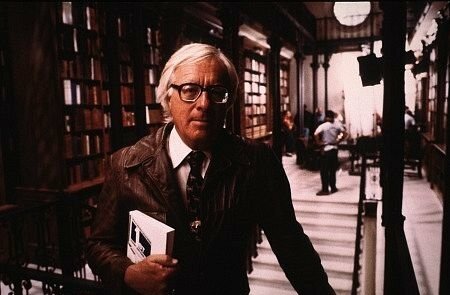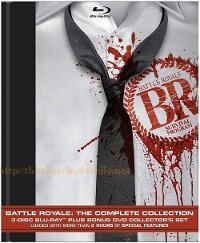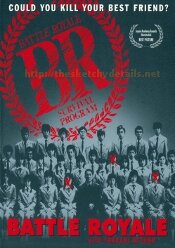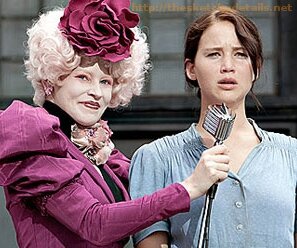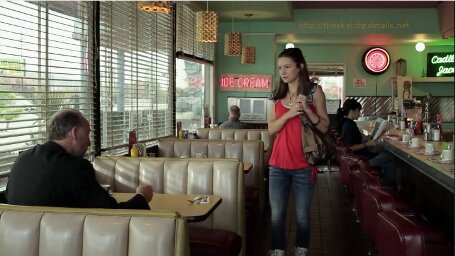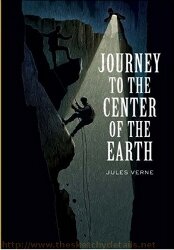Sometimes, I like to dig around the IMDB message boards to get a feel for movie trends. I look through the list of popular films on the front page and wade through all the trolls to see what big ideas are being bandied about. When a bunch of people are digging into an idea I’ve thought about for a while, I know I have to write about it before the topic has lost its weight.
The subject is Battle Royale versus The Hunger Games and I’ve been trying to write about it for real since January. The reason it’s taken so long to get here is simple: reading The Hunger Games completely reversed my thinking on the subject. I wouldn’t dream of writing a real critical piece without actually reading the source material, but that doesn’t mean I don’t start to think of arguments based on research and what I know for sure.
The issue at play here is one of plagiarism versus parallels. How can we tell if intellectual theft has occurred when the core of the idea has been around for centuries? It’s a tricky topic because it places the intentions of the author against the finished product that can easily take on a life of its own.
I can firmly say that I do not believe Suzanne Collins intentionally did anything wrong. I’m willing to take her at her word that she has not read Battle Royale or seen the film. The inspiration she cites–reality TV, the Iraq War, the Vietnam War, and the myth of Theseus–add up to the story she told. Do I think that, at some point, she might have heard about the popular Japanese property? Is there a chance it influenced her on a subconscious level? Yes.
But that’s no different than any other writer. We experience things–life, media, reviews, theories–and they eventually come out in unexpected ways. If she didn’t set out to steal ideas and approached the story in such a radically different way, she didn’t plagiarize Koushun Takami’s work.

Do similar bold, graphic, representational covers mean the stories are the same?
The parallels between
The Hunger Games and
Battle Royale are not a case a plagiarism. They are a case of post-apocalyptic framework leading to a similar set of circumstances. How many post-apocalyptic novels and films use gladiatorial combat as the impetus for social commentary? Too many. It’s a way of predicting a future created through corruption based on a past that actually happened.
The threat of brutal death delivered under the public eye has been a common literary and cinematic device for decades. Shirley Jackson famously played up the random victim of public spectacle in “The Lottery.” Running Man, both Stephen King’s novel and the film, predicted the kind of reality TV content that became enough of a cultural zeitgeist to inspire modern writers to criticize the form with televised murder again and again. Both versions of Death Race as well as Videodrome take the spectacle further, punishing anyone who tries to silence the system with mandatory participation in the games. Even Series 7: The Contenders predicts teenagers being thrown into these games with the inclusion of a high school student in the “win three seasons to earn your freedom” kill or be killed reality show. Did all these films and novels steal from each other? Or did the creators all arrive at a similar concept to explore vastly different issues?
The reason The Hunger Games and Battle Royale get lumped together is children. Specifically, they’re the two most recent novels/films to have children fight to the death for public spectacle. On paper, the similarities are damning. Here are boilerplates for the two novels. See if you can tell which is which.
#1:
In a post-apocalyptic future where all of the world’s major societies have fallen, the government has decided to keep the people in line by having entire classes of students fight to the death on a live broadcast. They are randomly assigned weapons in an ever-changing arena filled with traps that punishes those who break the rules or fail to pay attention. The winner is the last child standing, who is taken on a whirlwind publicity tour to show the power of the government. However, in the latest game, two students team up to beat the system and hopefully make it out alive.
#2:
In a post-apocalyptic future where all of the world’s major societies have fallen, the government has decided to keep the people in line by having randomly chosen children and teenagers from all over the country fight to the death on a live broadcast. They are trained to use randomly selected weapons in an ever-changing arena filled with traps that punishes those who break the rules or fail to pay attention. The winner is the last child standing, who is taken on a whirlwind publicity tour to show the power of the government. However, in the latest game, two children team up to beat the system and hopefully make it out alive.

Do twisted men controlling a youth bloodbath mean Battle Royale and The Hunger Games are permanently linked?
The former is
Battle Royale; the latter is
The Hunger Games. All cynicism aside, this is as detailed as I could get before the novels become radically different. From writing style to subject matter, the two books are nothing alike outside of televised gladiatorial combat with children.
In Battle Royale, Koushun Takami writes a deeply satirical novel of the Japanese government’s efforts to force children to stay in school until they graduate. The Battle Royale program is instituted as a scared straight program. Until truancy rates drop, each month, a different classroom full of students will be taken away to fight to the death. The program has no effect on the education system. Families are scandalized and Battle Royale only happens to keep the people in line with government thinking. Fight against them and you will be executed for interfering.
Takami writes a unique series of third person episodes. Once the children are in the arena, their individual stories are told one after the other. You’ll see who lives, who dies, and what they are thinking about the program, their classmates, and what they’ve accomplished with their lives. Some children choose honor through suicide, while others hope and pray that maybe the government will see the light and free them. Still others have been forced into the game to punish them for winning in the past or being uncontrollable wards of the state. The result is a gut-wrenching novel of absurd violence and biting satire that will haunt you for years.
Suzanne Collins takes a very different approach in The Hunger Games. The entire story is told from the perspective of Katniss Everdeen, a poor teenager in a mining district. She has learned to hunt with a bow and deadly force for her family’s survival. Here, the games exist to remind the districts that the Capital controls every aspect of their lives after a failed rebellion years before. Only two children are taken from each district–one boy, one girl–and Katniss volunteers at 16 to save the life of her 12 year old sister. Katinss is buffed, polished, painted, and prepped to be a reality TV icon for the greedy Capital. She becomes a favorite to win the Hunger Games because she surprises the controllers of the game with a shocking display of archery skills. Her prep team plans a story arc behind her back, allowing her fellow district tribute to declare his love for her the night before they enter the arena.
Collins’ first person prose is a trick used to engage a younger reader. Katniss feels real, so you’re willing to follow along with the absurdity of the concept. Collins is not aiming for satire, but a tangible understanding of the ravages of war. The children are the focus so the YA audience can empathize with their struggle. They are trained to fight to the death by a government obsessed with controlling people to parallel the power-motivation for war. The lens of reality TV, the fancy futuristic technology, and the romantic angle exist only to soften the blow of the violence.

Are forest settings and fighting children enough to cry plagiarism?
So why, when the actual novels are so different, do people keep bringing up the “Suzanne Collins stole from Koushun Takami” angle? Simple. Online culture is defined by referential analysis. How many reviewers said the new drama
Alcatraz was
Lost in a prison because they both shared a leading actor? Chances are, if you read a review on a blog or media news site, the comparison was made. Why? Because it was an easy reference.
The Internet makes life immediate. These grand parallels between a Japanese property that never received a proper US release and a blockbuster YA trilogy pop up because you can search “novels like The Hunger Games” and have Battle Royale pop up as a result on Google. IMDB is even a major player in the phenomenon. You can search for a plot detail and find hundreds of films that may or may not be connected beyond a shared keyword.
With seemingly all the information in the world available in a few seconds, it becomes easy to let cynicism rule in the wake of coincidence. You can find this superficial parallel in an instant. Therefore, it must be [insert assumption here].
I fell for it since The Hunger Games was released. Someone actually told me it was Battle Royale for teenagers. I read the Wikipedia page and couldn’t see any alternative. Suzanne Collins stole one of my favorite modern novels and whitewashed it for a younger audience. I was determined not to read the novels because how could they possibly hold up to the original.
I was wrong. The approach, the style, even the narrative are so different that I felt foolish for ever questioning the merits of The Hunger Games. There are discussions to be had about the content of the book and the film. Is that level of violence really appropriate in a YA novel? Does Collins push her war allegory too far into a specific political ideology? Does adapting the trilogy into a series of films glorify the level of violence that Collins is criticizing?
What shouldn’t be the driving force of discussion is claiming The Hunger Games rips off Battle Royale. It’s an oversimplification of two tightly-executed novels that deserve better. Comparative analysis would be appropriate, but not diatribes on who stole from who or why you refuse to read one because of the fans of the other.
Fiction is not a zero sum game. You can like one, both, or neither. You can even make the argument for how similar the properties are. Reducing a discussion of literary/cinematic merit to “you stole my toys so I’m going home to cry to Mommy” is a disservice to whichever property you prefer.
If The Hunger Games and Battle Royale teach us anything, it is the value of cooperation. Shared goals can be achieved even in the face of extreme opposition if you are willing to actually work together. You might not achieve everything on your own, but you can make more progress with a partner than you can on your own. If the novels themselves are not a case for accepting the cultural cache of both novels, I don’t know what is.
Thoughts? Love to hear them.
